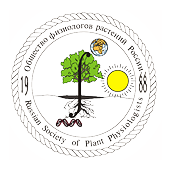Новости науки и практики // Июнь 2017

Sowing new seeds of knowledge about the drivers of plant diversity
A new study of Australian wildflower communities is improving understanding of how climatic stress controls plant diversity, based on the strategies different species use to survive, grow and reproduce.
https://www.eurekalert.org/pub_releases/2017-05/uoq-sns051717.php
HKU and Kyoto U reveal a new strategy to enhance the efficiency of cereal straw for biofuel production
Straw is commonly used for feeding animals, burning, baling, etc. As one of the "Three Canton Treasures", straw can actually be used as a raw material to produce biofuel.
https://www.eurekalert.org/pub_releases/2017-05/tuoh-hak050917.php
Sand temperature and moisture break seed physical dormancy
In a new study determined whether Eremosparton songoricum (a perennial semi-shrub that inhabits the cold desert and produces seeds that show physical dormancy) exhibits seasonal periodicity of seed germination. They also investigated the relationship between seed dormancy break and soil temperature and moisture.
https://aobblog.com/2017/05/sand-temperature-moisture-break-seed-physical-dormancy/
Suberised barriers support composite water and solute transport in barley roots
It is shown that the basal zone with greater suberin is shown to have lower water permeability than the apical zone inHordeum vulgare. A comparison of root and cell water permeabilities suggests a primary cell-to-cell water and nutrient transport system in barley roots in addition to flow via apoplastic pathways.
https://aobblog.com/2017/05/suberised-barriers-support-composite-water-solute-transport-barley-roots/
DNA ladders: Inexpensive molecular rulers for DNA research
New license-free tools will allow researchers to estimate the size of DNA fragments for a fraction of the cost of currently available methods. The tools, called a DNA ladders, can gauge DNA fragments ranging from about 50 to 5,000 base pairs in length.
https://www.sciencedaily.com/releases/2017/05/170526084536.htm
How plants use sunlight to tell time via cell protein signaling
Researchers have solved a key mystery of how plants tell time. Researchers learned a chemical bond in the protein Zeitlupe forms and breaks in reaction to sunlight at varying rates, signaling plants when to bloom, metabolize and store energy, and other functions. The discovery means plant clocks can be tuned by targeted mutations to plant proteins that may improve resistance to pathogens and crop yields.
https://www.sciencedaily.com/releases/2017/05/170516104718.htm
Deep learning helps scientists keep track of cell's inner parts
High throughput screens of image-based data allow a direct view of proteins' whereabouts in the cell but the lack of fast and accurate analysis tools has been a bottleneck. Scientists reveal DeepLoc, a deep learning algorithm that is faster and more accurate than the human eye and brings analysis time down from months to hours.
https://www.sciencedaily.com/releases/2017/05/170502112533.htm
Helping plants pump iron
A study led by a researcher at the Salk Institute has found that variants of a single gene can largely determine a plant's ability to thrive in environments where iron is scarce.
https://www.eurekalert.org/pub_releases/2017-05/si-hpp052417.php
Temporal dynamics of gene expression and histone marks at the Arabidopsis shoot meristem during flowering
Plants can produce organs throughout their entire life from pluripotent stem cells located at their growing tip, the shoot apical meristem (SAM). At the time of flowering, the SAM of Arabidopsis thaliana switches fate and starts producing flowers instead of leaves. Our results suggest that regulation of translation might be involved in adjusting meristem function during the induction of flowering.
http://www.nature.com/articles/ncomms15120
Plants call 911 to help their neighbors
A professor teamed with a local high school student on research that found injured plants will send out warning signals to neighboring plants. The signals are sent through airborne chemicals released mainly from leaves. In the study, neighboring plants that received the signal responded by boosting their defenses.
https://www.sciencedaily.com/releases/2017/05/170516153935.htm
The transcriptional repressor complex FRS7-FRS12 regulates flowering time and growth in Arabidopsis
Data reveal a molecular machinery that controls the photoperiodic regulation of flowering and growth and offer insight into how plants adapt to seasonal changes.
http://www.nature.com/articles/ncomms15235
Molecular dynamics simulations reveal chaos in electron transport
Scientists from Groningen University used molecular dynamics to visualize the working of Photosystem II and published their results on in Nature Communications.
https://www.eurekalert.org/pub_releases/2017-05/uog-mds050517.php
Two new proteins connected to plant development discovered by scientists
The discovery of two new proteins could lead to better ways to regulate plant structure and the ability to resist crop stresses such as drought, thus improving agriculture productivity.
https://www.sciencedaily.com/releases/2017/05/170522091056.htm
Amorphophallus: Facts About the Smelly Plant
One of the world's largest and rarest flowering structures, the corpse flower is a pungent plant that blooms rarely and only for a short time. While it is in bloom, the flower emits a strong odor similar to rotting meat or, aptly, a decaying corpse.
http://www.livescience.com/51947-corpse-flower-facts-about-the-smelly-plant.html
Scientists identify two new proteins connected to plant development
The discovery of two new proteins could lead to better ways to regulate plant structure and the ability to resist crop stresses such as drought.
https://www.eurekalert.org/pub_releases/2017-05/taac-sit051917.php
Plant cell walls' stretch-but-don't-break growth more complex than once thought
A close-up look at the growth of plant cell walls, which largely determines the way a plant grows and takes shape, offers a better understanding of how the tough-but-flexible walls expand, researchers have found in a recent study.
https://www.eurekalert.org/pub_releases/2017-05/ps-pcw050117.php
Tea tree genome contains clues about how one leaf produces so many flavors
Scientists found that C. sinensis leaves not only contain high levels of catechins, caffeine, and flavonoids, but also have multiple copies of the genes that produce caffeine and flavonoids.
https://www.eurekalert.org/pub_releases/2017-05/cp-ttg042717.php
Новости
Новости науки и практики // Апрель 2024
Обзор научных новостей, опубликованных во всемирной паутине за последний месяцФосфорилирование плазматической мембраны H+-АТФазы Thr881 (треонин) участвует в светоиндуцированном открывании устьиц
Ученые из Университета Нагои (Nagoya University) и Института трансформирующих биомолекул (WPI-ITbM) обнаружили новый ...Научная конференция «Photosynthesis and Hydrogen Energy Research for Sustainability – 2024»
Приглашаем Вас принять участие в XII международной научной конференции


Объявления
Записей не найдено.



